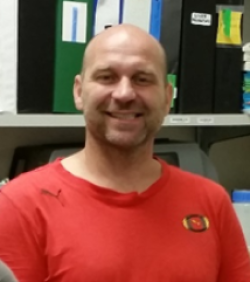Miloslav Sanda

Education
- BS Clinical and Toxicological Analysis, Charles University in Prague, Prague, 2000
- MS Analytical Chemistry, Charles University in Prague, Prague, 2004
- PhD University of Chemistry and Technology, Prague, 2010
- Postdoctoral Studies at Georgetown University, Washington, DC 2010-2012
Employment
- Group Leader, Biomolecular Mass Spectrometry, Max-Planck-Institut für Herz- und Lungenforschung (Max Planck Institute for Heart and Lung Research), Germany
Previous Employment
- Associate Professor, Georgetown University, Washington, DC
- Director of Analytical Chemistry, Clinical and Translational Glycoscience Research Center, Georgetown University
- Mass Spectrometry Specialist, Czech Agriculture and Food Inspection Authority, Prague. 2003-2005
- Vice-Chief of Mass Spectrometry Group, Institute of Organic chemistry and Biochemistry, ASCR, Prague, 2005-2010
Background
I began my career as a specialist in analytical and bioanalytical chemistry with a special interest in mass spectrometry at the Czech Agriculture and Food Inspection Authority (CAFIA). I was the first to start using the LC-MS methodology for routine measurement of pesticides, mycotoxins and organic pollutants in food and agricultural products at the CAFIA. After my transition to IOCB ASCR Prague I established and lead a proteomics subgroup of mass spectrometry at the institute. I have since developed and implemented the latest methodology for qualitative and quantitative analysis of proteomics and have collaborated on projects related to cancer biology, virology, enzymology and entomology. In 2010, I began my postdoctoral work at GUMC concentrating on bioanalytical mass spectrometry in projects in glycobiology and cancer. I have pioneered methodology for site-specific glycosylation analysis based on MRM and DIA technology in biological samples. My current effort is focused on the structure-specific resolution of glycostructures using mass spectrometry. My work is published in 53 peer-reviewed international journals. I look forward to new challenges and opportunities to expand and develop field of glyco-bioanalytical chemistry in cancer-related biology, immunology, virology and glycobiology.
